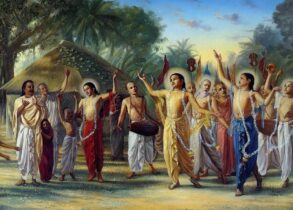Rig Vedic Period
Q. Write about the social, political, and economic life of people during the Rig Vedic period.
| Intro – Introduce with writing about Rig Vedic Period.
Body – 1. Write about the social, political, and economic life of people during Rig Vedic period. Conclusion – Conclude with Rig Vedic period was a formative era in ancient Indian history that laid the foundation for many aspects of Indian society, politics, and economy. |
Answer
The Rig Vedic period, also known as the Early Vedic period, marks the early phase of the Vedic civilization in ancient India. It was marked by the presence of tribal kingdoms such as the Bharatas, Matsyas, Yadus, and Purus. The Rig Vedic period is believed to have spanned from approximately 1500 BCE to 1000 BCE.
Social Life during the Rig Vedic Period:
- Caste System: The Rig Vedic society was organized along the lines of an early caste system. It consisted of four main varnas (castes) – Brahmins (priests and scholars), Kshatriyas (warriors and rulers), Vaishyas (farmers, traders, and artisans), and Shudras (laborers and servants).
- Joint Families: The fundamental unit of society was the family or ‘graham,’ and its leader was the ‘grahapathi.’ Several generations often lived together under one roof.
- Status of Women: Women in this period enjoyed opportunities for intellectual and spiritual growth, and several women poets like Apala, Viswavara, Ghosa, and Lopamudra made notable contributions. However, patriarchy was still prominent.
- Evils: Gatherings and social events were open to women, and there was no mention of practices like sati or child marriage in the Rig Vedic literature.
- Religion: Prominent Rig Vedic deities included Prithvi (Earth), Agni (Fire), Vayu (Wind), Varuna (Rain), and Indra (Thunder).
Political Life during the Rig Vedic Period:
- Tribe-Based Polity: The Rig Vedic society was tribal in nature, with each tribe being led by a chief or a king (Rajan). These tribal chiefs had limited authority and were primarily responsible for the defense of their people.
- Sabha and Samiti: The political organization included the Sabha, a council of elders that advised the chief, and the Samiti, a popular assembly where major decisions were made through consensus. This early democratic system had a significant impact on later political structures in India.
- Inter-Tribal Conflicts: The Rig Vedic period was marked by frequent conflicts and battles among various tribes. The kings or chiefs were expected to protect their people from external threats and invaders.
Economic Life during the Rig Vedic Period:
- Agriculture: Agriculture was the primary occupation of the people during this period. They cultivated crops like barley, wheat, and rice, and cattle rearing was also important for sustenance.
- Trade: Trade was in its early stages during the Rig Vedic period. Initially, barter was the preferred method for trade, but later, substantial transactions began to use gold coins known as “nishka.”
- Metalworking: Metalworking, especially the use of bronze and copper, was prevalent. This period marked the transition from the Stone Age to the Bronze Age, which had a significant impact on tools and weapons.
- Cattle Wealth: Cattle were considered a symbol of wealth and were used as a measure of one’s prosperity. They played a central role in the economic life of the Rig Vedic people.
In conclusion, the Rig Vedic period was a formative era in ancient Indian history that laid the foundation for many aspects of Indian society, politics, and economy. The period was characterized by tribal societies, democratic governance, and a simple agrarian economy. These early developments would evolve and shape the more complex and stratified society of ancient and medieval India.




